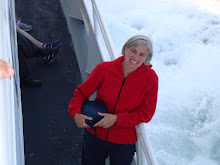
Houghton Mifflin Company
ISBN-13: 978-0-618-75043-6
From the Flap: Evan Treski is people-smart. He is good at talking with people, even grownups. His younger sister, Jessie, on the other hand, is math-smart, but not especially good at understanding people. She knows that feelings are her weakest subject. So when their lemonade war begins, there really is no telling who will win, or if their fight will even end.
CAN’T AND CAN DO LISTS (Intrapersonal)
-Jessie and Evan’s lemonade war stems from their fears. As a class, brainstorm a list of Jessie and Evan’s fears. Then, ask each student to brainstorm a list of all the things they think they “can’t” do. When everyone is done, dispose of these lists as a group either by burying or recycling them to show those fears are gone for the year. Next, have each student brainstorm a list of everything he or she can do. As the school year progresses and students gain skills, ask them to add to their lists.
MATH COMPANIES (Logical/Mathematical)
-Jessie and Evan team up with friends to sell more lemonade. Have your students team up to solve the math problems in the book. If you’re reading it out loud, divide students into math companies of three or four students. Each time you come to a math problem in the book, have the companies work together to figure out the solution. The first team to come up with the correct answer wins.
MS. DAVIES’ COMMENT CARDS (Interpersonal)
-Ms. Davies talks about comment cards in The Lemonade War and these are a great way to create community in a classroom. Each week assign one student another student in the class. Each student must write a specific compliment about their assigned student on an index card. Choose a student to read the index cards out loud at the end of the week. It’s best if this activity is done anonymously to avoid embarrassment and teasing.
NEWSPAPER ADVERTISEMENTS (Visual/Spatial)
-Bring in newspaper ads for students to look at. Which ones work and which ones don’t? Why? Based on their findings, have students create visual advertisements for a product. Discuss the properties of color, line, shape and form and how these elements work together to create an effective advertisement or not.
TEN TIPS (Verbal/Linguistic)
-Evan and Jessie write "Ten Tips for Turning Lemons Into Loot." Have each student write ten tips for an activity he or she knows how to do. Discuss word choice and how writing tips differs from other forms of writing such as reports, letters, and advertisements.
BOOK BUDDIES
Frindle by Andrew Clements
How We Are Smart by W. Nikola-Lisa
Lunch Money by Andrew Clements

This comment has been removed by the author.
ReplyDelete